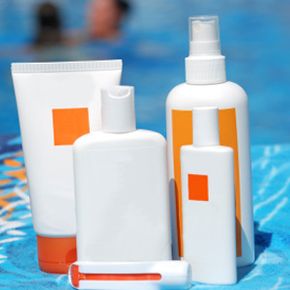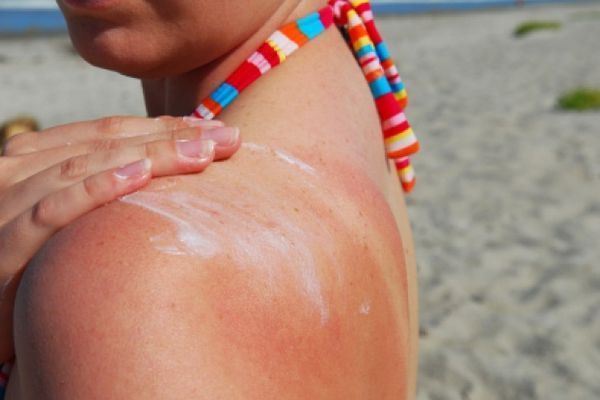Various forms of sunscreen have been around for thousands of years. Ancient Egyptians used jasmine as a sunscreen, and ancient Greeks rubbed olive oil on their skin for protection. By the 1800s, chestnut oil was widely used as a sunscreen in folk medicine [source: Urbach]. But the first effective, commercially available sunscreen wasn't on shelves until 1938 when Franz Greiter, an Austrian chemist, developed Gletscher Crème [source: Riklis]. Today, there are a variety of sunscreen products on the market, but there are only two main types of sunscreen: physical and chemical [source: Mayo Clinic].
Although the terms "sunscreen" and "sunblock" are often used interchangeably, chemical sunscreens absorb the sun's harmful ultraviolet rays while physical sunscreens, or sunblocks, reflect them. Physical sunscreens act as a shield and reflect both UVA and UVB light and contain ingredients such as titanium dioxide and zinc oxide [source: American Melanoma Foundation]. Physical sunscreens are a good choice for people with allergies to chemical sunscreens [source: American Academy of Dermatology].
Advertisement
Chemical sunscreens absorb UVA or UVB rays and contain ingredients such as avobenzone and benzophenone [source: Mayo Clinic]. Chemical sunscreens often contain UVB-absorbing chemicals only; however, there are some chemical sunscreens that contain both UVB and UVA absorbers [source: American Melanoma Foundation]. A new over-the-counter sunscreen was recently developed that contains mexoryl, an ingredient that offers protection from both UVA and UVB radiation [source: Mayo Clinic]. Broad-spectrum sunscreens, which contain both chemical and physical ingredients, are also available [source: American Academy of Dermatology].
Aside from knowing the difference between physical and chemical sunscreens, you should also take the product's sun protection factor, or SPF, into consideration when purchasing sunscreen. The SPF is a measurement of the amount of UVB protection the sunscreen offers. There's currently no standard rating system that measures UVA protection [source: Mayo Clinic].
Keep reading to find out what type of sunscreen is best for you.
Advertisement

